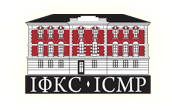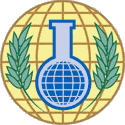Polyelectrolytes in water: How the presence of hydrophobic groups modifies the ion–specific effects
Vojko Vlachy
e-mail: vojko.vlachy
 fkkt.uni-lj.si
fkkt.uni-lj.si
Polyelectrolytes are by definition polymers containing groups that can ionize in an appropriate solvent. Since they contain both ionic and hydrophobic groups, they resemble certain biological materials, such as nucleic acids and proteins. Aliphatic x, y–ionenes are alkyl polymer chains in which methylene groups are separated by ionic charges. They can be prepared with varying degrees of hydrophobicity; for example, the 3,3–ionene contains three methylene groups between the quaternary nitrogen atoms. For the 6,6–ionene there are six methylene groups between the charges, which makes it a much weaker polyelectrolyte. They are soluble in water and can therefore be studied by standard methods of the solution chemistry, such as osmometry, calorimetry, conductometry, and others [1,2]. Ionenes can therefore be test substances to help one understand the ion–specific and hydrophobic effects when a more complex bio–polyelectrolyte is dissolved in water. We will present the results for the osmotic coefficient, enthalpy of dilution, heat capacity, partial molar volume, dielectric relaxation, conductivity, and transport numbers in 3,3–, 4,5–, 6,6–, and 6,9–ionenes with fluoride, bromide, chloride, and iodide counterions. Many of these data are yet unpublished. We will show how the increased length of the hydrophobic chain between the polyion's charges modifies the counterion–polyion interaction. Most interestingly: the effect is highly ion–specific; presence of hydrophobic groups affects differently the ionene solutions with fluoride, than solutions with bromide (or chloride and iodide) ions. The experimental results will be discussed in view of the explicit water molecular dynamics simulations of 3,3– and 6,6–ionene oligoions with various counterions [3].
References
- C. Pohar, K. Arh, V. Vlachy, J. Phys. Chem. B, 106, 9967 (2002).
- M. Lukšič, B. Hribar−Lee, V. Vlachy, R. Büchner, Macromolecules, 42, 4337 (2009); Phys. Chem. Chem. Phys. 11, 10053 (2009).
- M. Druchok, V. Vlachy, K. A. Dill, J. Chem. Phys., 130, 134903 (2009); J. Phys. Chem. B, 113, 14270 (2009).



